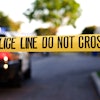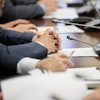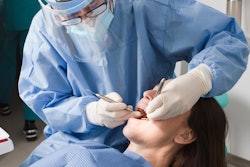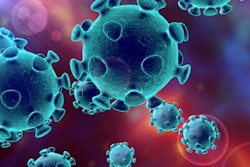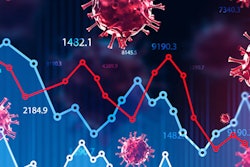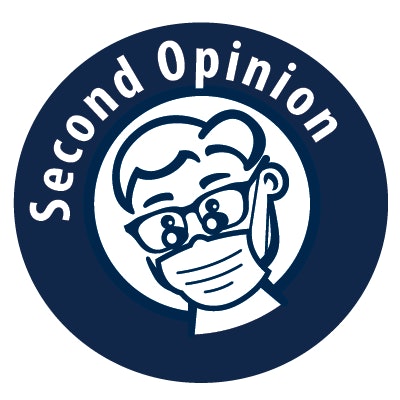
As a registered dental hygienist, I am concerned for our communities, fellow healthcare professionals, and our world during this time. COVID-19 has presented us with an asymptomatic, airborne-spread, respiratory disease resulting in death or long-term health effects for many. It has opened the eyes of many (but not all) dental professionals as to where our facilities are lacking in environmental safety.
According to the U.S. Department of Labor, dental hygiene is the No. 1 high-risk occupation in exposure to the novel coronavirus due to our sustained, close proximity and aerosol-generating procedures. This risk is real not only for providers but also for the patients entering our practice.
I am concerned for the safety of my colleagues and my patients who need oral healthcare, as well as the current standing of individual state dental boards, dental associations, and many dental professionals. I understand businesses are trying to survive, patients are asking for care, and COVID-19 is wreaking havoc on day-to-day operations. Dental facilities are trying to manage in the best way possible, but these concerns are not going to resolve without unified action.
According to the Journal of Infectious Diseases and the U.S. Centers for Disease Control and Prevention (CDC), when an aerosol is produced, SARS-CoV-2 can last in the air for three hours and extend 13 ft from a patient. New research is detecting even longer and farther occurrences.
Patients are typically scheduled back to back, in open rooms, putting patients and employees at risk of exposure to the aerosols generated during treatment that remain in the air. Every procedure done in a dental office creates aerosols, even hand scaling. Oral health is essential to overall health. We are being advised not to perform procedures that include ultrasonic use or polishing, which is lowering the standard of care and still putting patients at risk.
Dental offices have never been equipped to handle or deal with patients who have an airborne infectious disease, such as COVID-19. When the AIDS pandemic hit our industry, we implemented personal protection equipment (PPE) and mandated a safety protocol for the bloodborne disease.
As dental professionals, we are educated and understand that COVID-19 is not bloodborne. Scientists are adamant that COVID-19 cannot be compared to AIDS. If you need a comparison, think tuberculosis (TB), and we do not perform services on active TB patients.
The decision to reopen and what was required of dental offices to reopen was left to the "professional judgment" of the dentists by the dental boards in states all over the U.S. and other countries. The dental boards have lobbied the governors stating that "dentists are educated people and know what they are doing to keep the public and their workers safe."
The governors then left decisions up to the judgment of the dentist, as lobbied by the dental board, which has a vested financial interest in reopening before we fully understand the risks of transmission through dental aerosols. This puts patients at risk of exposure to the novel coronavirus during dental treatment.
As a dental hygienist, I have a license to protect, and I also have "professional judgment" because I am educated in the same infection control standards. However, some dental hygienists are losing their employment when making this decision because they do not own the dental practice.
The ADA created "interim guidance" on returning to work during the COVID-19 pandemic. However, it was not indicated that this was in addition to utilizing previous Occupational Safety and Health Administration (OSHA) mandates for respiratory infections, which state that engineering controls -- such as isolation rooms; negative pressure rooms; heating, ventilation, and air conditioning (HVAC) systems professionally installed by an engineer; and directional airflow -- are needed to treat patients properly and safely.
OSHA's recommendations for PPE are laid out in its information for dentistry workers and employers. One of the many criteria is an N95-or-higher level respirator for healthcare personnel that is fit-tested and approved by the U.S. National Institute for Occupational Safety and Health (NIOSH). However, many offices are choosing to provide their own choice of PPE, not managing the contaminants as mandated, or reusing what should be disposable.
Hygienists are losing employment for bringing up concerns about inadequate or insufficient PPE protocols. Then, there are those who see nothing wrong with current protocol standards. Dentists are requiring liability waivers from employees as a condition of employment and inconsistent PPE protocols are putting patients and employees at risk.
Many dental offices are ignoring the issue of aerosols, OSHA and CDC guidelines, and the lack of research data available during this pandemic. Licensed professionals are proceeding with business with no scientific evidence that their facilities are safe, as no one is doing environmental testing at this time.
Dental practitioners are adding makeshift air filters to their facilities and extra suction, claiming they have upgraded their safety measures to keep patients safe during this time but offering no actual proof. Reports to OSHA only provide informal inspections during the pandemic and are only in place to protect the employee -- not the patient.
Concerned dental professionals are speaking out across the U.S., contacting our dental boards and governors, sending letters, and making phone calls to local officials who may not be informed about what is happening. Yes, the issues are still being ignored. Sadly, it seems it is about business and money.
Many dentists are appearing in the news, saying dentistry is safe, including one past president of the ADA claiming to be unaware of instances where SARS-CoV-2 has been transferred from dental care. But the claims that contact tracing would show links to dental offices are invalid.
My state director for the Bureau of Oral Health said the state does not require reporting by occupational status. That doesn't seem efficient in tracing and tracking. Have any environmental samples been taken? I want actual proof that dental offices are environmentally safe and not spreading disease.
As dental professionals, we all took an oath, which is also in our dental practice acts. This principle expresses the concept that professionals have a duty to protect the patient from harm. Under this principle, the dentist's primary obligations include keeping knowledge and skills current, knowing one's own limitations and when to refer to a specialist or other professional, and knowing when and under what circumstances delegation of patient care to auxiliaries is appropriate.
This is being ignored. OSHA is in place to protect the workers, and we have an obligation to protect our patients.
The public and ethical healthcare professionals need help in providing these services. We cannot be the only ones advocating and lobbying for patient safety. We need a uniform change and a united front to improve safety for all of us.
Thank you for your time.
This article was provided by a registered dental hygienist wishing to remain anonymous.
The comments and observations expressed herein do not necessarily reflect the opinions of DrBicuspid.com, nor should they be construed as an endorsement or admonishment of any particular idea, vendor, or organization.

